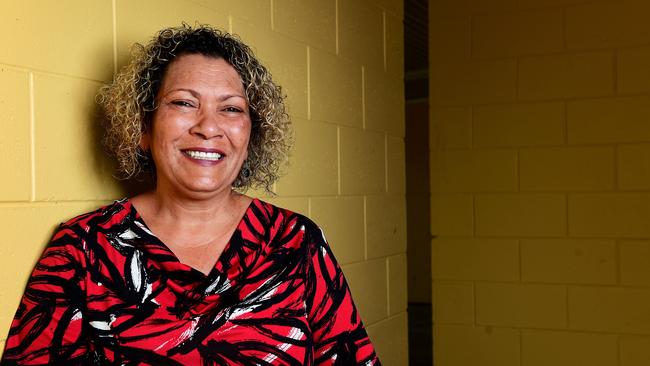Leeanne Caton on alternatives to prison
Whatever you think of the curfew in Alice Springs, it is a symptom of two decades of failed prison-first policies, writes Leeanne Caton.

Sponsored Content
Don't miss out on the headlines from Sponsored Content. Followed categories will be added to My News.
Whatever you think of the curfew in Alice Springs, it is a symptom of two decades of failed prison-first policies.
More than 1 in 100 people in the Territory are in prison.
That’s almost four times the rate of imprisonment of the next highest state in Australia and higher than any nation in the world.
The closest comparison is El Salvador.
And the numbers of people in NT prisons has grown by more than 30 per cent in the past decade.
The simple fact is that if locking people up made the community safer, the NT would be the safest place on the planet.
Communities understandably want government action when crime occurs – we all want our communities to be a safe place to live.
When I speak to people in the communities affected, they don’t tend to blame young people.
Rather, they recognise we haven’t done enough for them.
They need support. They need more things to do. They need us to work harder to get them back into school or training for a job and to prevent a destructive cycle of repeat offending and incarceration.
And when they do end up in youth detention, we need to do better there.
The detention centres in the Territory are not equipped to rehabilitate incarcerated children and youth.
Those of us who have worked in and around the youth justice system know that unless we address the factors that actually contribute to crime, nothing will change. We will forever be treating the symptoms, not the cause.
Everyday people in affected communities know more about crime than they are given credit for.
When asked in a 2022 survey how the current system was working, 67 per cent of Territorians said they would like to see the justice system change to include more alternatives to prison.
We need to get tough on the causes of crime and fund smarter solutions that actually work. And we don’t have to look far to find the answers.
The community-led youth justice initiative on Groote Eylandt, has received a lot of coverage in recent times because it has cut offending by 95 per cent.
The Alternatives to Custody program in Alice Springs has seen reoffending as low as 25 per cent compared to the 60 per cent average across the community.
Bail support programs have been shown to slash reoffending by a third and increase compliance with bail conditions by 95 per cent.
Post release and diversionary community-led programs have shown dramatic decreases in
recidivism, including support programs focusing on drug and alcohol dependency which reduced offences by 62.1 per cent within two years.
We see grassroots work like the Arrernte Community Boxing Academy getting kids back on track.
And victims of crime, like the owner of the Goldfields Hotel Motel in Tennant Creek, finding ways to work with offenders to keep them out of prison.
This stuff is happening everywhere, and we need to hear more about those success stories and invest to scale them.
The question is: what binds these examples of success together? What are the ingredients that make for a successful program?
The first is community-led. It’s very simple – our local communities in the Territory are more diverse than other parts of Australia. When we let communities design solutions they work.
The second is to do everything possible to keep people out of prison and away from the revolving-door prison gate that drives reoffending. reoffending.
Once someone is imprisoned, we know their chance of reoffending increases.
The third is to address the social causes of crime. Most women in prison are domestic violence victims themselves.
We know that 40 per cent of people in prison have mental health conditions, 60 per cent have a drug or alcohol dependency and half of all people in prison were homeless before entering prison.
According to a landmark review by the Australian Institute of Criminology, programs that target the multiple risk factors for youth offending, that help change the way young people think and act, and that provide support in a safe social setting, surrounded by family, school, peers and their community, have all been found to be effective in reducing young people’s involvement in crime.
Importantly, the review found that removing a young person from their environment and failing to provide support when they returned to their community, did not reduce offending.
This review was published 20 years ago but could have been written yesterday. The evidence has only strengthened.
Territorians are demanding we get tough on the cause of crime and invest in smarter approaches to crime that are proven to work.
Leeanne is a Kalkadoon woman raised and educated in Darwin and an Ambassador for
Smarter Justice for Safer Communities initiative


